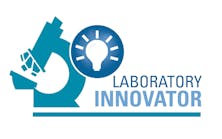Cell phone-based diagnostic system offers promise for infectious disease management
A new report published online by the Journal of Laboratory Automation (JALA) introduces a low-cost, field-deployable diagnostic system for rapid antimicrobial susceptibility testing in resource-limited settings. The authors demonstrate how a portable, cell phone-based microphotometric system can be integrated with gas-permeable microwell arrays to allow rapid determination of antibiotic-resistance profiles of pathogens in hospital and field environments.
To determine the antimicrobial resistance phenotypically, the growth of pathogens in microwell arrays is detected under different antibiotic conditions. The use of a colorimetric cell viability reagent is shown to significantly improve the sensitivity of the assay compared with standard absorbance spectroscopy. Gas-permeable microwell arrays are incorporated for facilitating rapid bacterial growth and eliminating the requirement of bulky supporting equipment. Antibiotics also can be pre-coated in the microwell array to simplify the assay protocol toward point-of-care applications.
By optimizing the operating conditions, the cell phone-based microphotometric system allows antimicrobial susceptibility testing for samples with initial concentrations from 101 to 106 cfu/mL. Using urinary tract infection as the model system, the authors demonstrate rapid antimicrobial resistance profiling for uropathogens in both culture media and urine.
According to co-author Pak Kin Wong, PhD, associate professor at the University of Arizona in Tucson, “Multidrug-resistant pathogens are major global health problems which are largely driven by the widespread use of antibiotics worldwide. Microfluidics provides a highly promising platform for addressing this issue by enabling rapid pathogen identification and antimicrobial susceptibility testing. This, in turn, will reduce the emergence of multidrug-resistant pathogens, or superbugs.” Read the report abstract.




